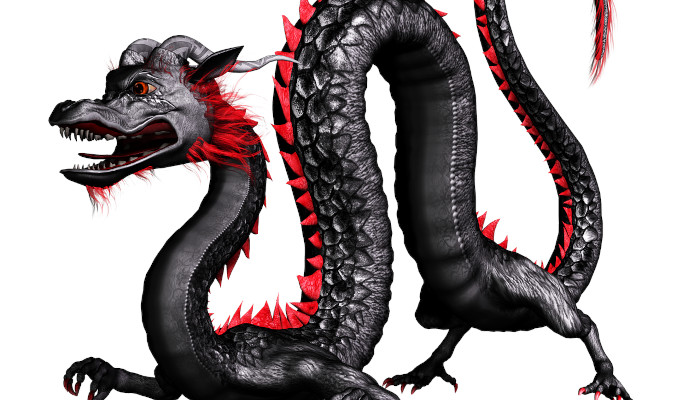
The EU and the US are concerned about the Chinese support for Russian military industrialization, and the PLA should think of its international thrust.
On the eve of China’s President Xi Jinping’s visit to Paris, French President Emmanuel Macron sounded a loud alarm bell. He said “that Europe faces imminent danger, declaring that ‘things can fall apart very quickly.’”[i] He is concerned about the Russian war in Ukraine, also backed by China’s industrial power. Macron advocates an EU army and doesn’t rule out a possible European direct intervention in Ukraine against Russia.
Prudence would demand to take the message seriously. If he’s wrong, little harm is done, but if he’s right, Europe could avert a historical disaster.
Similar voices also come from America.
On May 1st, Matt Pottinger alerted that China has already crossed the red line that the USA drew regarding Beijing’s support for Russia’s war in Ukraine[ii]. Pottinger reminded us that in 2013, President Obama drew a red line for Syria. Syria ignored it, and Obama did not act on his warning. This US dithering, Pottinger argues, prompted Russian President Vladimir Putin to take over Crimea in 2014. The US did not intervene at that time either.
Last week, Secretary of State Antony Blinken visited Beijing and argued that China should cease its military support to Russia, or it would risk being expelled from the SWIFT system, the US-centered financial instrument currently controlling about 90% of all global financial exchanges. This could be a major blow for China, the largest commercial power in the world, hindering its much-needed trade and access to foreign exchange.
The question is: will the US act, and if so, what will it do? Or will China comply, and how?
It’s possible that as long as it can, China will try to have the cake and eat it too, at least until the presidential elections in late November. Donald Trump might become president and cut a deal with Russia and possibly also with China. Then, why should Chinese President Xi Jinping decide before that?
Short of that, Beijing will try to pull any lever it can to keep Russia afloat and the war ongoing. Beijing doesn’t want Russia to cut a separate deal with the USA behind its back. In return for no agreement with the USA, Moscow wants Chinese goods to keep flowing in. Moscow is in a good position to bargain with both China and America. Moscow’s position is tenable as long as Trump menaces to turn US policies around.
Regarding the SWIFT threat—Beijing might be calculating how real and costly it could actually be. The internationalization of the RMB is risky because it can cause a double exchange rate for the RMB, one domestic and one external; thus, the RMB could grow out of the control of China’s central bank. But if pressed by Blinken, Beijing might decide to bite the bullet, also encouraged by some American advisors.
Establishing a common foreign policy between the Republican and Democratic parties as soon as possible[iii] should be fundamental. Without this, things could spin out of control in the next few months. Or perhaps they already have.
According to a recent report, China is already beating the USA in the ongoing arms race.
The key points of “Keeping Up with the Pacing Threat: Unveiling the True Size of Beijing’s Military Spending” by Mackenzie Eaglen (April 2024) are:
• Beijing’s publicly released military budget is inaccurate and does not adequately capture the colossal scope and scale of China’s ongoing military buildup and wide-ranging armed forces modernization.
• After accounting for economic adjustments and estimating reasonable but uncounted expenditures, the buying power of China’s 2022 military budget balloons to an estimated $711 billion— triple Beijing’s claimed topline and nearly equal with the United States’ military budget that same year.
• Equal defense spending between the United States and China plays to Beijing’s benefit. As a global power, the United States must balance competing priorities in the Indo-Pacific and elsewhere, which spreads Washington’s budget thinly across multiple theaters. Meanwhile, each yuan China invests in its military directly builds its regional combat power in Asia.
• America’s spy community has confirmed that Beijing’s defense spending is on par with Washington’s, but questions remain. The intelligence community’s estimate of China’s $700 billion in annual military expenditures needs more transparency to better convey Beijing’s military budget breakdown and inform policy debates regarding US defense spending investments, gaps, and imbalances.
The $700 billion figure is already about 3.5 times the European defense spending. Also, EU spending is divided among 28 countries with different agendas, making it highly inefficient. The Chinese PLA (People’s Liberation Army) has much lower industrial production costs, so it gets more bang for the buck than the US and EU.
The Chinese $700 billion is probably more cost-effective than the US’s $800-plus billion defense budget. Moreover, PLA spending increases faster and more significantly than either European or American military spending. The PLA is also cutting corruption, which historically diminished efficiency in military expenditure.
A Chinese destroyer costs $888 million, while an American one costs $2.2 billion, almost three times as much. The difference then grows in the production of drones and other state-of-the-art equipment. Additionally, China has the most comprehensive industrial capacity in the world, which it can lend at will to any country. The American industrial base has been shrinking for decades.
Consequently, the sheer Chinese military-industrial capacity and its efficiency in supporting Russia or any country it chooses to support creates an imbalance, which is most dangerous for European countries today facing the Russian threat and even more so in the future. If European countries do not address this, they risk putting themselves in a weak position against any future strategic blackmail.
Chinese military might be helpful against foreign threats, but on its own, it could backfire. American military muscle is part of a global design for security established 80 years ago, at the end of WWII. The American military serves two aspects: domestic and international security, tightly woven together for many decades. Consequently, many countries (right or wrong) do not perceive the American military as a threat; conversely, it is seen as part of their own national security. This perception is further reinforced through a web of international defense agreements.
The PLA is geared solely for China’s security, not for any global or international order. Therefore, its growth can be seen by many countries as disruptive of the international order, dependent on the US, and threatening.
Additionally, because the PLA has no military alliance with anyone, without a comprehensive communication and political and strategic “pitch sale,” China’s martial buildup can isolate Beijing and prove counterproductive by generating more security threats than it may prevent.
The PLA buildup thus feeds on the growing US-China tension about Beijing’s support for Russia’s military effort, and if these fears are not adequately addressed, they could soon spiral out of control.
There is no quick fix for this predicament. Still, perhaps, in the short term, Beijing should consider distancing itself from Russia and Iran and thus gain some breathing space with the US and other countries as it may reconsider the general situation of the world and its strategy.
[i] https://www.economist.com/leaders/2024/05/02/emmanuel-macrons-urgent-message-for-europe
[ii] https://www.wsj.com/articles/china-has-crossed-bidens-red-line-russia-ukraine-war-732cdcf3
[iii] https://www.appiainstitute.org/articles/on-contradiction-between-the-us-and-china/#










The USA should keep his own word. Do not say something but doing differently ‼️
The PLA’s dangerously double-edged sword – Asia Times – News Release
The main problem between China and US is the status of Taiwan as an illegal protectorate of US. US formally recognized Taiwan as a part of China when diplomatic relations were established in the ‘seventies. China started its rearmament after US president Clinton sent two Carrier Battle Groups through Taiwan Strait in 1996.
Russia was threatened by Ukraine becoming a part of NATO since 2007, despite the Ukraine constitution saying it was a neutral country. In 2014 the elected president of Ukraine was driven out and and a new regime established. The new regime changed the constitution and wants NATO membership. The coup was democratic because it was sponsored by US.
In 2019 RAND Corporation wrote a paper in expectation of a war between Ukraine and Russia. The purpose was to divide Russia in half a dozen states that would all be controlled by US. It expected that Ukraine with its larger armed forces would not be defeated and that Russia would succumb in short order to western sanction. No doubt Russia read the paper and it tried to avoid war.
Even in December 2021 Russia tried to avoid war. But when during February the Kiev regime sharply increased artillery fire against the population of Donetsk – as it no doubt expected as a preliminary to the war – Russia threatened Kiev, with minimal forces, and established a wide land corridor to the Crimea isthmus. The Russian purpose in this war is to demolish the Ukrainian armed forces and to end the power of the fascist faction in Ukrainian politics. It would end the discrimination against people not speaking the Ukrainian language as their mother tongue.
As it happens Russia is not only disarming Ukraine but also European NATO countries which are sending their excess armaments to that unfortunate country. Even so conquering other European countries wouldn’t serve any Russian purpose. Trade is much more profitable than conquest.
China and Russia are both threatened by US and so are many countries. US has the purpose of controlling all other countries and it need to do so because it cannot pay for itself other than by creating huge amounts of dollars out of thin air, It has to pay in some way for the eight or nine hundred military bases it maintains all over the world. Internally the government spends per day ten billion dollars more than it receives and it has to borrow the difference. As it is using the dollar as a weapon against Russia it has become difficult to borrow outside US so it might have to depend on the Fed.
China and Russia are the most prominent members of BRICS+ which now has ten members and a list of another forty or so aspirant members. One purpose of it is to end the use of the US dollar as the main reserve currency and so reduce US to just another country. As the US has been constantly at war for many years this should lead to a much more peaceful world. And this is very necessary if we want to end the overproduction of carbon dioxide.
The PLA’s dangerously double-edged sword – Yerepouni Daily News